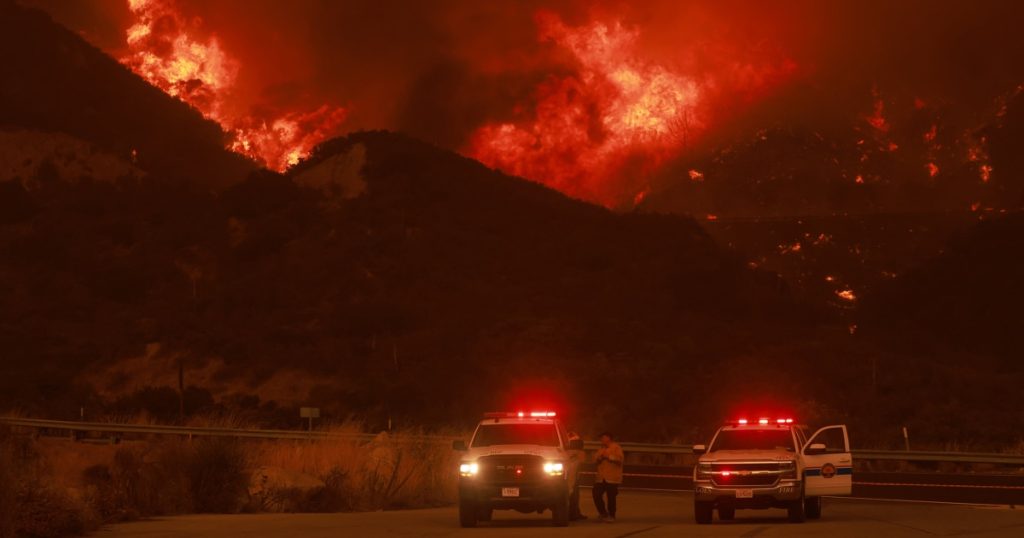A wildfire, dubbed the Line Fire, was burning out of control in the foothills of the San Bernardino National Forest, located about 65 miles east of Los Angeles. The blaze had scorched approximately 11 square miles of grass and chaparral, emitting a large cloud of dark smoke that covered the area. The fire began on Thursday evening and the cause of the blaze was still under investigation.
The scorching heat wave in the region, with temperatures reaching triple digits, added to the challenges faced by firefighters battling the Line Fire. About 500 firefighters were on the frontlines, supported by water-dropping helicopters and other aircraft. The firefighters warned that the blaze had the potential for large fire growth in the next 12 hours. The plumes of smoke billowing from the fire and the sight of flames cresting hillside ridges added to the intensity of the situation.
Despite the ferocity of the fire, there were no reported injuries and no homes or structures had been damaged or destroyed by the Line Fire. Evacuations were being expanded as a precautionary measure to ensure the safety of residents in the area. The National Weather Service reported that downtown Los Angeles experienced record-breaking temperatures, with a high of 112 degrees Fahrenheit on Friday – only the third time since 1877 that such high temperatures had been recorded.
The Line Fire presented a formidable challenge to firefighters as they worked tirelessly to contain the blaze and prevent further destruction. The rugged terrain and dry vegetation fueled the fire, making it difficult to control. The coordination of fire crews on the ground and air support from helicopters was crucial in the firefighting efforts. The intensity of the fire and the ominous smoke clouds served as a stark reminder of the dangers posed by wildfires in the region.
The fire threat was exacerbated by the ongoing heat wave, which heightened the risk of wildfires in the area. Residents were urged to stay informed and prepared for potential evacuations as the firefighting efforts continued. The Line Fire served as a stark reminder of the importance of fire safety measures and the need for vigilance in fire-prone areas. The extreme weather conditions and dry vegetation created a perfect storm for wildfires to ignite and spread rapidly.
As the Line Fire continued to burn, firefighters remained vigilant and focused on containing the blaze. The dedication and bravery of the firefighters on the frontlines were evident as they worked tirelessly to protect lives and property. The community came together to support the firefighting efforts, demonstrating resilience in the face of natural disasters. Despite the challenges posed by the wildfire and the heat wave, the response from emergency responders and the community highlighted the strength and unity in times of crisis.


